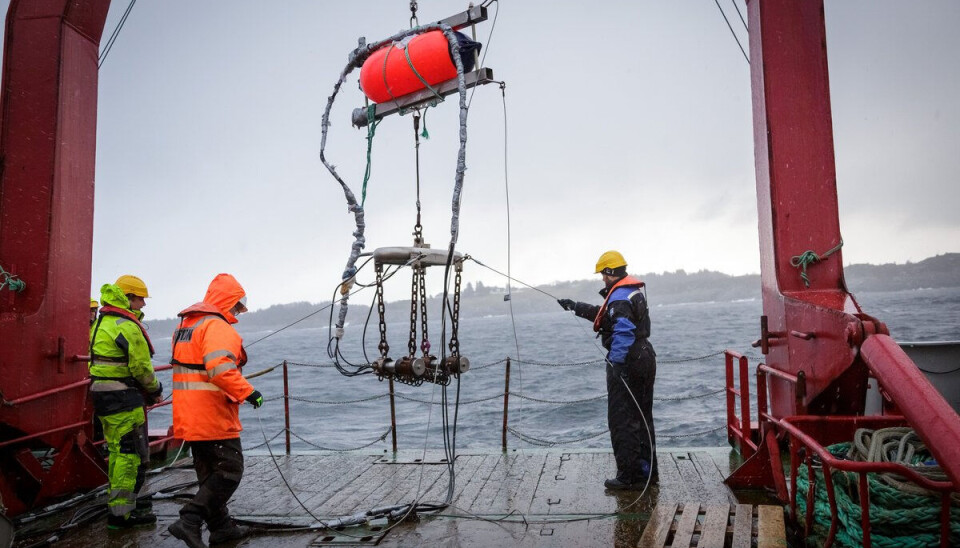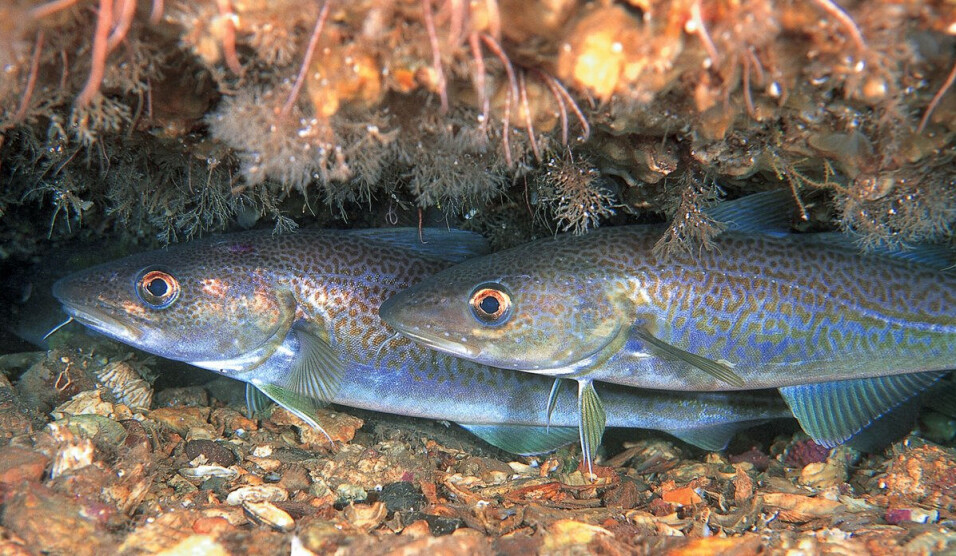THIS ARTICLE/PRESS RELEASE IS PAID FOR AND PRESENTED BY the Institute of Marine Research - read more

Cod did not abandon their spawning site when exposed to noise from seismic airguns
Across two spawning seasons, researchers have exposed Atlantic cod to powerful blasts from airguns during spawning and tracked the behaviour of the fish.
“We found no indications that cod left the spawning grounds early due to the noise from the seismic airguns," postdoctoral researcher Kate McQueen at the Institute of Marine Research (IMR) says.
She and her colleagues have now published the results of the experiment in which almost 200 cod were tagged with acoustic transmitters and exposed to noise from seismic airguns during spawning.
Listening buoys in the sea have recorded the cod's movements in and out of the spawning area. Data from the test site have been compared with data from a seismic-free nearby control site.
No observed change in emigration
The results, which have been published in the ICES Journal of Marine Science, indicate that the cod are not as easily frightened as previously thought:
- Tagged cod gradually left the spawning site during the spawning season, and there was no change related to the seismic airgun sound.
- Cod at the control site left the spawning site at a similar rate to cod at the test site.
“This suggests that seismic surveys at a certain distance will not scare spawning cod away from important spawning grounds,” McQueen explains.
The experiment was carried out during the spawning season in 2020 and 2021 in Bakkasund.

Different reactions in different areas
The study was performed part of the SpawnSeis project, which was started in 2018 to obtain more knowledge about how noise from seismic surveys affects spawning cod.
Seismic surveys are mainly used to explore oil and gas resources. The method consists of sending powerful low-frequency sound waves towards the seabed.
Based on results from previous studies, and as a matter of precaution, the IMR has advised to avoid seismic surveys in a buffer zone around known spawning areas during the spawning season.
“An earlier study indicated that the noise from the airguns scared the cod away from the area. However, this study was done in a feeding ground in the open sea, rather than a coastal spawning site,” McQueen says.
She points out that the reaction to seismic activity might vary between areas and periods.
“Spawning is a very important period for cod, so cod may choose to stay at their spawning grounds despite the disturbance from the seismic airguns,” she says.

Might lead to changes in advice
IMR publishes an annual report containing updated advice on seismic and other man-made noise in the ocean. The results from the Austevoll trial will be considered when the next scientific advice is prepared, according to researcher Lise Doksæter Sivle, who is responsible for the advice.
“As a result of this study, we might change our advice from recommending a fixed buffer zone around the spawning area of 20 nautical miles to having a sound limit that should not be exceeded inside the spawning area,” she says.
This limit would be equal to the noise level the cod was exposed to in the experiment, which did not cause the cod to flee.
“This is therefore considered a safe limit for noise that fish can be exposed to without the risk of them abandoning their spawning ground,” Sivle says.
It is known that most fish can hear well. Many also use sound to communicate. Still, different species have different levels of hearing, and might therefore react differently to a given noise level. The researchers explain that they have studied cod as a model species in the SpawnSeis project.
“We assume that the results will be applicable also to other species with similar lifestyle and hearing, such as haddock and pollock,” Sivle says.
Advice for 2023 will be published in the new year after consideration by IMR's advisory committee.

Further research is ongoing
Even though the cod did not leave the spawning ground during the experiment, this may not mean that the fish were entirely unaffected by the seismic airguns.
“The cod may respond in ways we were unable to detect using the methods in this study,” Kate McQueen says.
In a companion study that has been submitted for evaluation, the researchers have combed through data from the experiment to check for other, smaller changes in the cod’s behaviour inside the spawning grounds.
In another part of the SpawnSeis project, the researchers have carried out experiments with spawning cod in net cages. The captive cod were exposed to noise from a small air gun, and their eggs were collected and examined.
“These experiments will provide information on whether the seismic affects how successful the spawning is in terms of fertilisation and development,” Lise Doksæter Sivle says.
Experiments with new technology
During the spawning season earlier this year, the researchers repeated the experiments in Bakkasund with a marine vibrator instead of airguns. This is a new technology developed by the seismic industry, which utilises longer-term, low-frequency vibrations rather than short bangs.
“With these experiments we can compare the response of cod to these different types of sound sources,” Kate McQueen says.
The researchers state that the studies help us understand how anthropogenic noise affects life in the sea.
“Successful spawning is crucial for maintaining fish stocks, so it is particularly important to understand how human activities affect fish during the spawning period,” McQueen says.
Reference:
McQueen et al. 'Spawning Atlantic cod (Gadus morhua L.) exposed to noise from seismic airguns do not abandon their spawning site', ICES Journal of Marine Science, 2022. DOI: 10.1093/icesjms/fsac203 Abstract.

This article/press release is paid for and presented by the Institute of Marine Research
This content is created by the Institute of Marine Research's communication staff, who use this platform to communicate science and share results from research with the public. The Institute of Marine Research is one of more than 80 owners of ScienceNorway.no. Read more here.
See more content from the Institute of Marine Research:
-
These whales have summer jobs as ocean fertilisers
-
Have researchers found the world’s first bamboo coral reef?
-
Herring suffered collective memory loss and forgot about their spawning ground
-
Researchers found 1,580 different bacteria in Bergen's sewage. They are all resistant to antibiotics
-
For the first time, marine researchers have remotely controlled an unmanned vessel from the control room in Bergen
-
New discovery: Cod can adjust to climate change – from one generation to the next




































